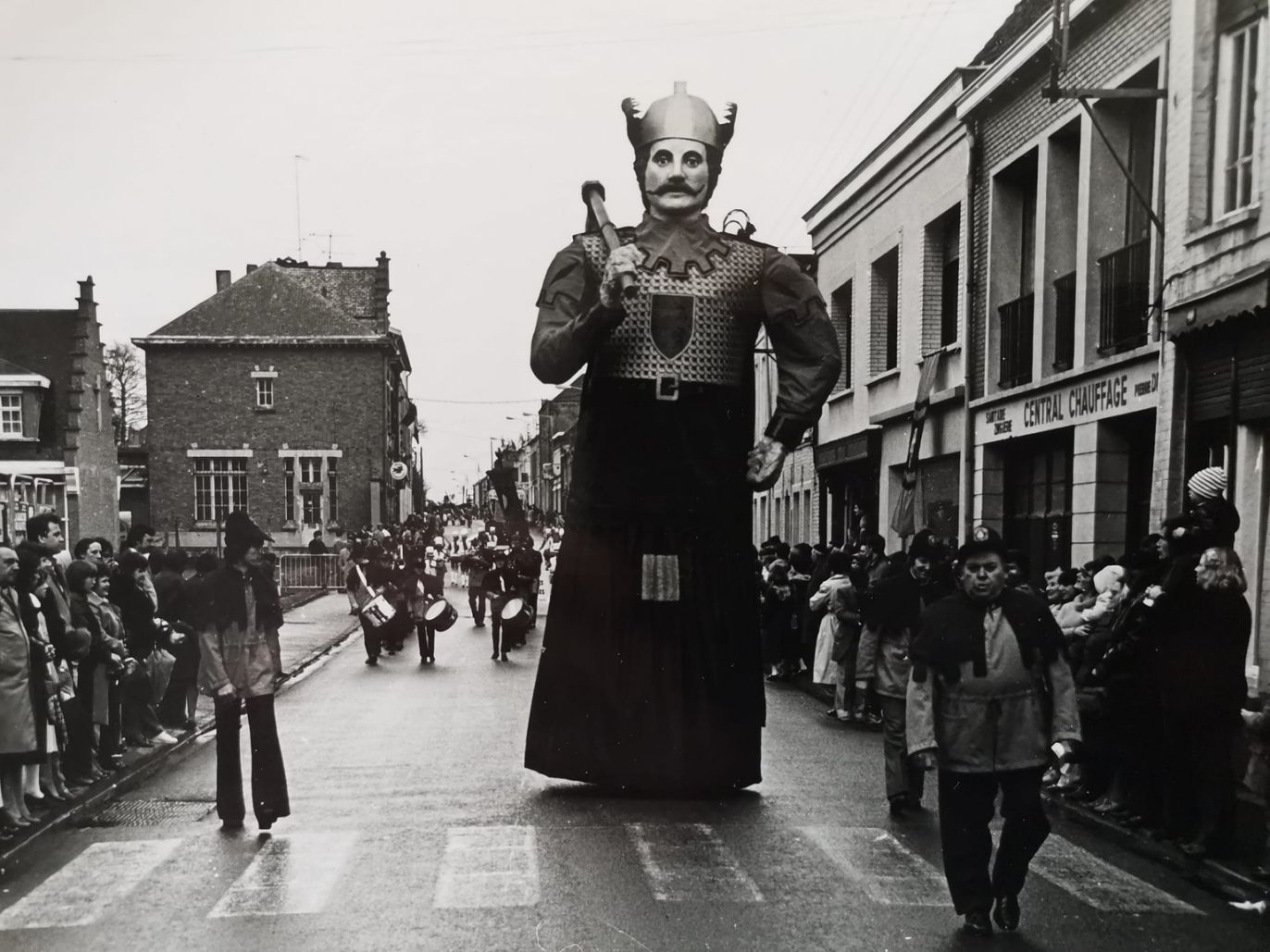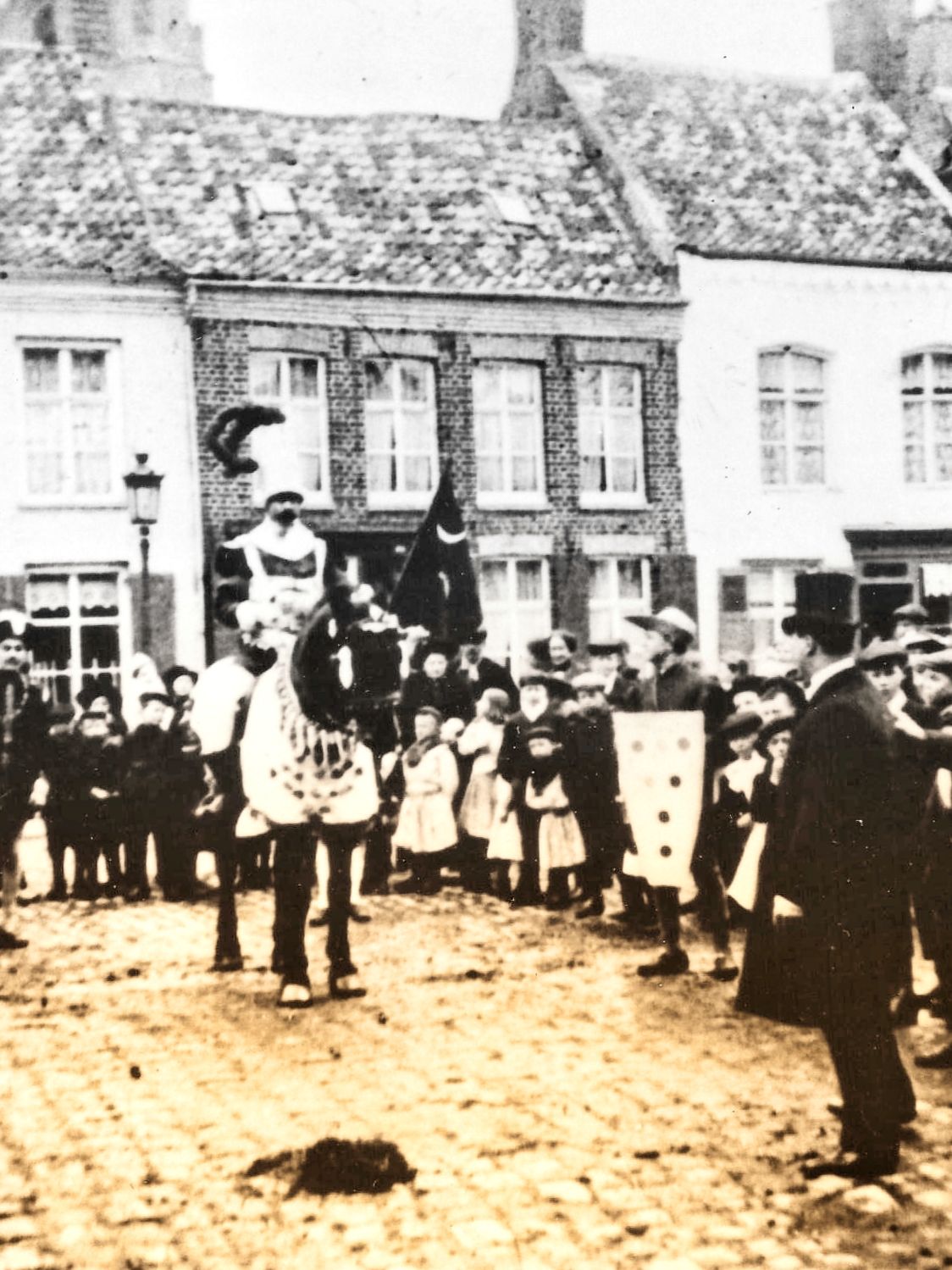
On mid-Lent Sunday morning, Lord Fromulus rode up to greet the Reuze de Steinfort at his local.
From the original Fêtes de la Mi-Carême to today's Carnaval.
"Friends of Fromulus
The Friends of Fromulus association was founded in 1913 with Mr. César Gilloots as president. Its aim was to revive local commerce, entertain the population and attract young people from surrounding towns by presenting cheerful and original groups during the carnival procession.
It is placed under the aegis of a 12th century lord of Steenvoorde. This lord, Fromulus (Frumold or Frumoldus)was known as a jolly fellow who was also a valiant warrior at the time of the Crusades.
In the 19th century, a spontaneous and popular carnival took place every year during the Mi-Carême festivities. For their 1st Grand Carnaval procession, the "Friends of Fromulus" kept the same date.
On March 22, 1914, the Reuze van Steinfort made its first appearance at the 1st Carnival Procession.
Composition of the procession: 1. Gilles van den Borsch (1395) takes possession of his hunting grounds in Steenvoort - 2. Trumpets - 3. La France guerrière, (patriotic float) - 4. Narcisse, famous drum major, and his student tapin - 5. Les Joyeux Pompiers, band - 6. Princes en ballade - 7. The Valenciennes in Flanders (float); the Lacemakers and their craft; their Queen and her Maids of Honor - 8. Flemish wedding - 9. Fromulus' heralds - 10. Trades of the time - 11. Fromulus, lord of Steenvoorde, (1125) le Glay, his standard-bearer, coat of arms, vassals, tirelaine, jester, etc. - 12. The Court of Fromulus - 13. Bouquetières and Fleuristes - 14. Cinderella - 15. Escorting the Reuze - 16. de Reuze van Steinfortin full regalia - 17. Harmonie du Reuze - 18. Group of originals - 19. Candy car, distribution of anistecouques and picnics by the Reuze to his good people of Steenvoorde - 20. Le Célébre Guéritout in his free operations.
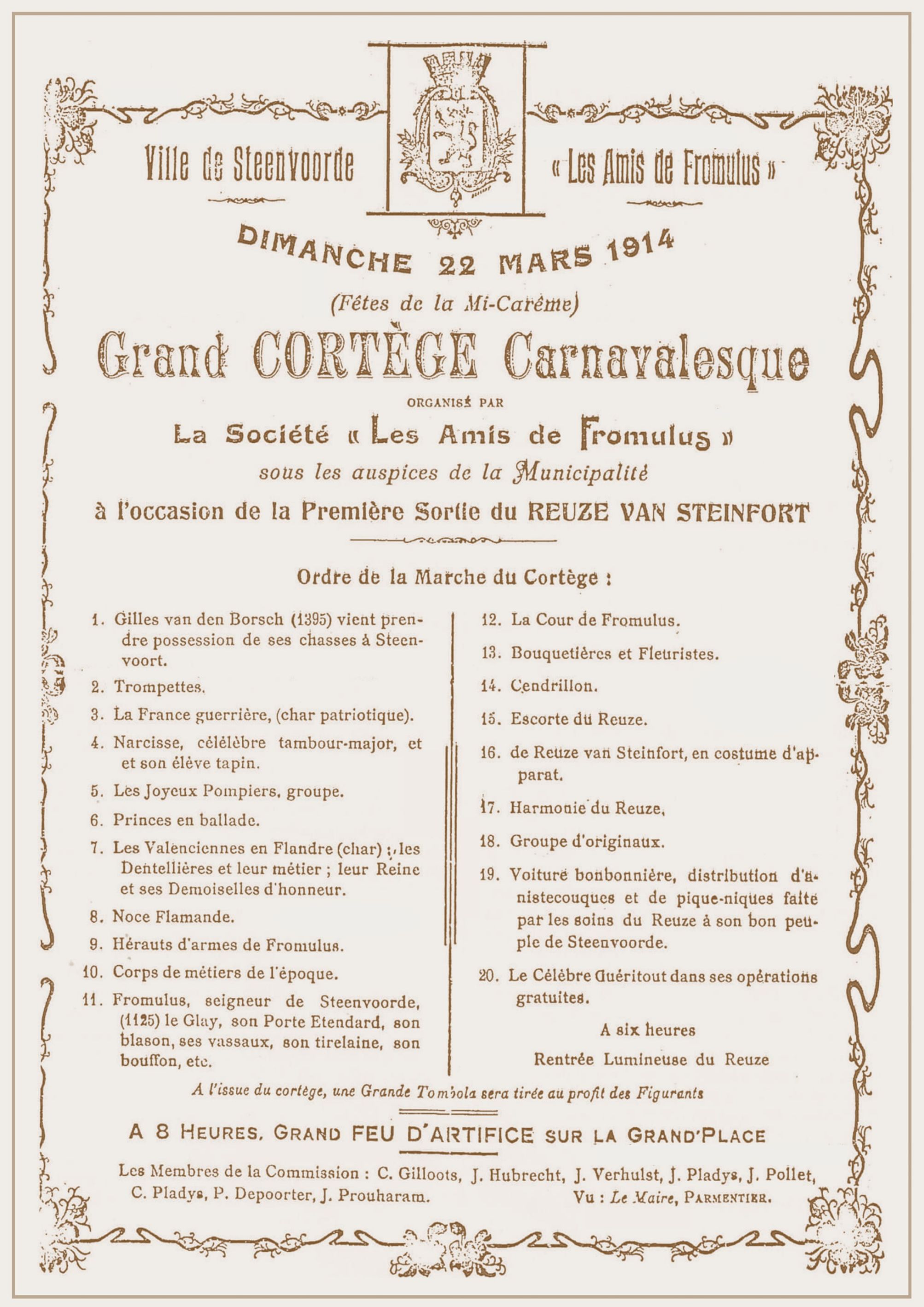
1914 Carnival procession program
A few years later, for weather reasons, the Cortège Carnavalesque was moved to the last Sunday in April.
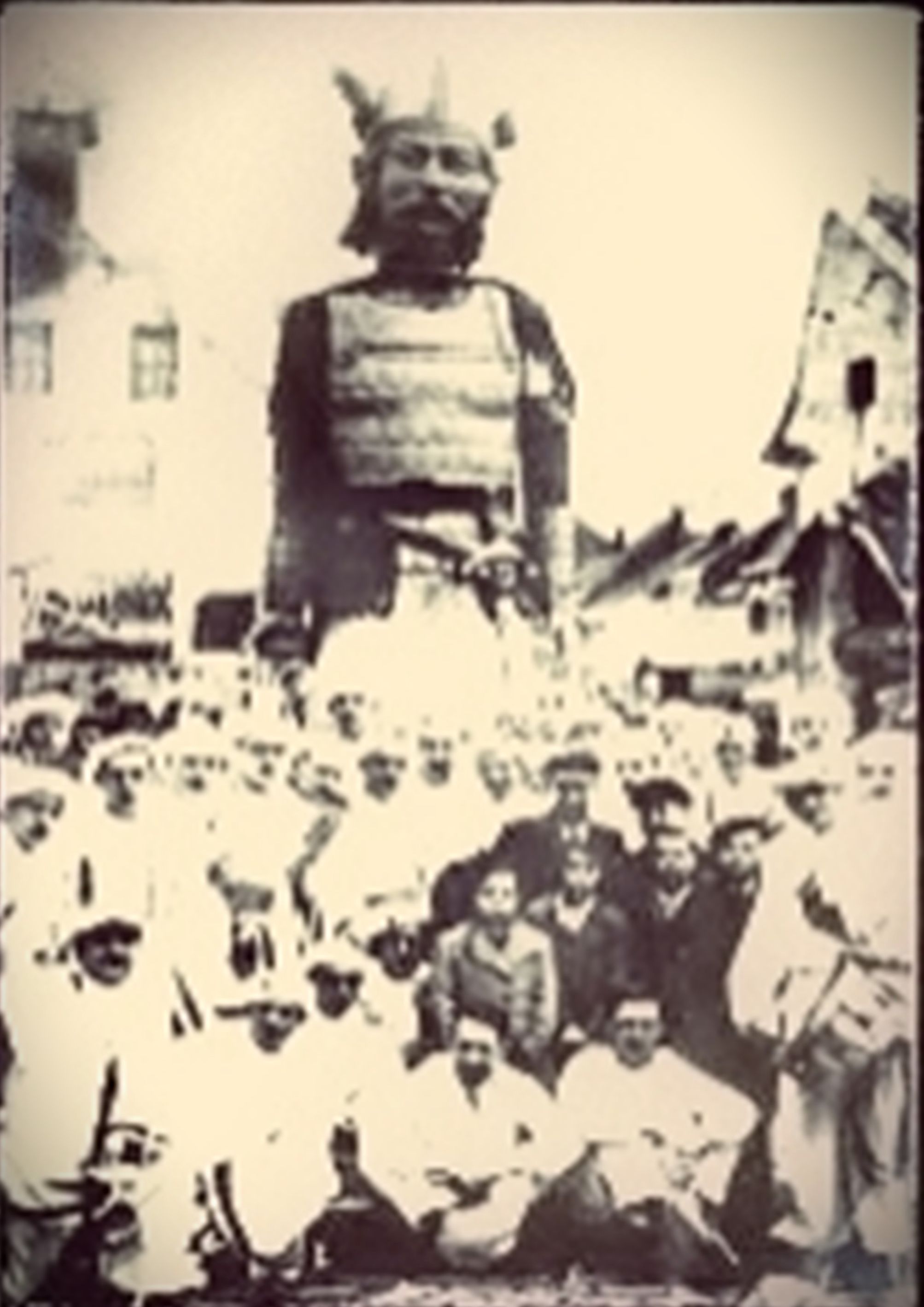
1914 - 1940
Reuze de Steinfort
The archives of the "Friends of Fromulus" association show that in 1935 the date had been changed.
(1) "The festival took place on the Sunday of Mid-Lent. We remember with pleasure "Pannekoucke hus", the pancake float, the Queen's float, a dozen ladies in regional costume, piped bonnets, shawls with large flowers, long skirts, holding the lace tile between their knees. Those were the days when the beautiful "Valenciennes" lace was made, which merchants bought by the yardstick and which today can only be found at the Bailleul lacemaking school...
Bad weather and cold are always detrimental to a street festival, and it was decided to postpone the event to the last Sunday in April. Following the success of Steenvoorde, Ypres, Poperinghe, Hazebrouck, etc. set up similar festivals.
Beautiful groups were formed and, invited by our Committee, paraded through our streets, acclaimed by hundreds of people...
For some years now, thanks to the generosity of our local councillors and residents, the "Friends of Fromulus" have been able to call on French, Belgian and Dutch companies, who compete with each other in spirit and gaiety, to the great delight of the population and the greatest profit of local commerce."
(1) Extract from the Bulletin officiel Municipal of 1964
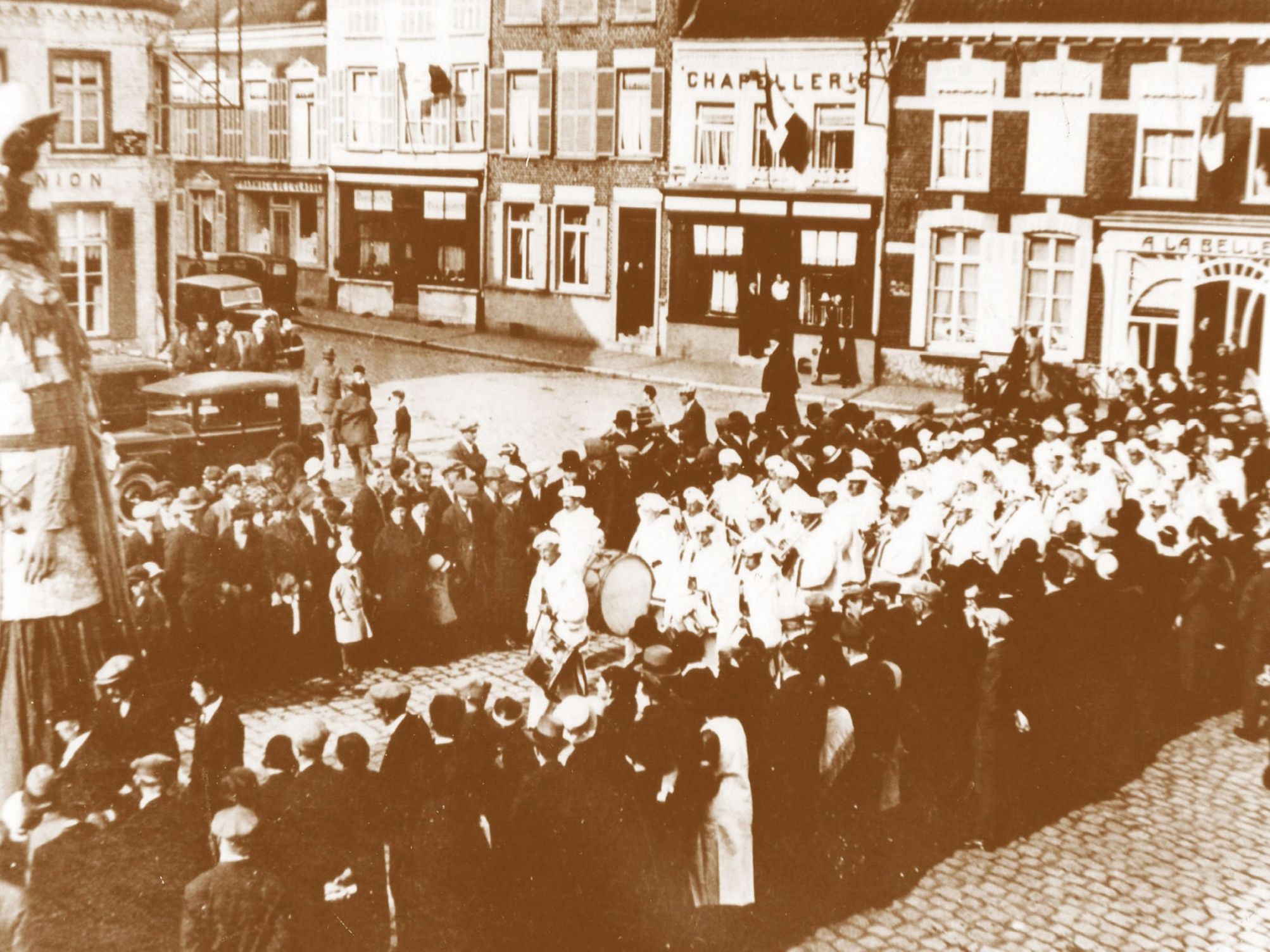
Music from Steenvoorde in the 1930s
At 1959 the event was renamedSummer Carnival".
At 1970 the official Municipal Bulletin reports on the excellent Summer Carnival organized by the "Friends of Fromulus".

Photo from the 1964 municipal magazine.
Jean le Bûcheron 2nd
" Summer carnival 1969 was not lacking in quality: it was colorful, varied, joyful and offered the full range of group varieties one might expect to find in a procession worthy of the name; but its greatest quality was certainly that it was Steenvoordois. Of all the processions from the former Hazebrouck arrondissement, Steenvoorde certainly had the largest number of local groups: the most illustrious Steenvoordois, Jean Le Bûcheron, was escorted as usual by the Musique des Pierrots to lead the way. Behind him were some big heads from Nice on Steenvoord shoulders. Much applauded for their originality were the groups from the Maison des Jeunes.
Magnificent was the Troika, pulled by an oudezellian donkey, and wildly cheerful were the Ukrainian wedding girls, all dressed in purple. The Bermuda shorts, already well known in the region, were a big hit, as were the baroque bicycles that raced madly along the procession route.
But it was undoubtedly the "Flemish-style" (electoral) campaign that was the most successful: the young activists demanded "bread, wine... and shadocks", and presented the ballot material (a big bale of straw, etc.) - a real carnival! a real carnival!
The rest of the procession was made up of groups from the region: the graceful majorettes from Grand-Fort-Philippe in blue and white, the Polish group from Waziers with their picturesque music, and the Limousins from Strazeele, who were a big hit. The Belgians were out in force. Those from Neuve-Eglise were accompanied by two giants, while those from Ghent played the "O'Gusts" O'Gusts". The Poperinge fire department, who had come as friends and neighbors, lit chimney fires to extinguish them and spray the crowd.
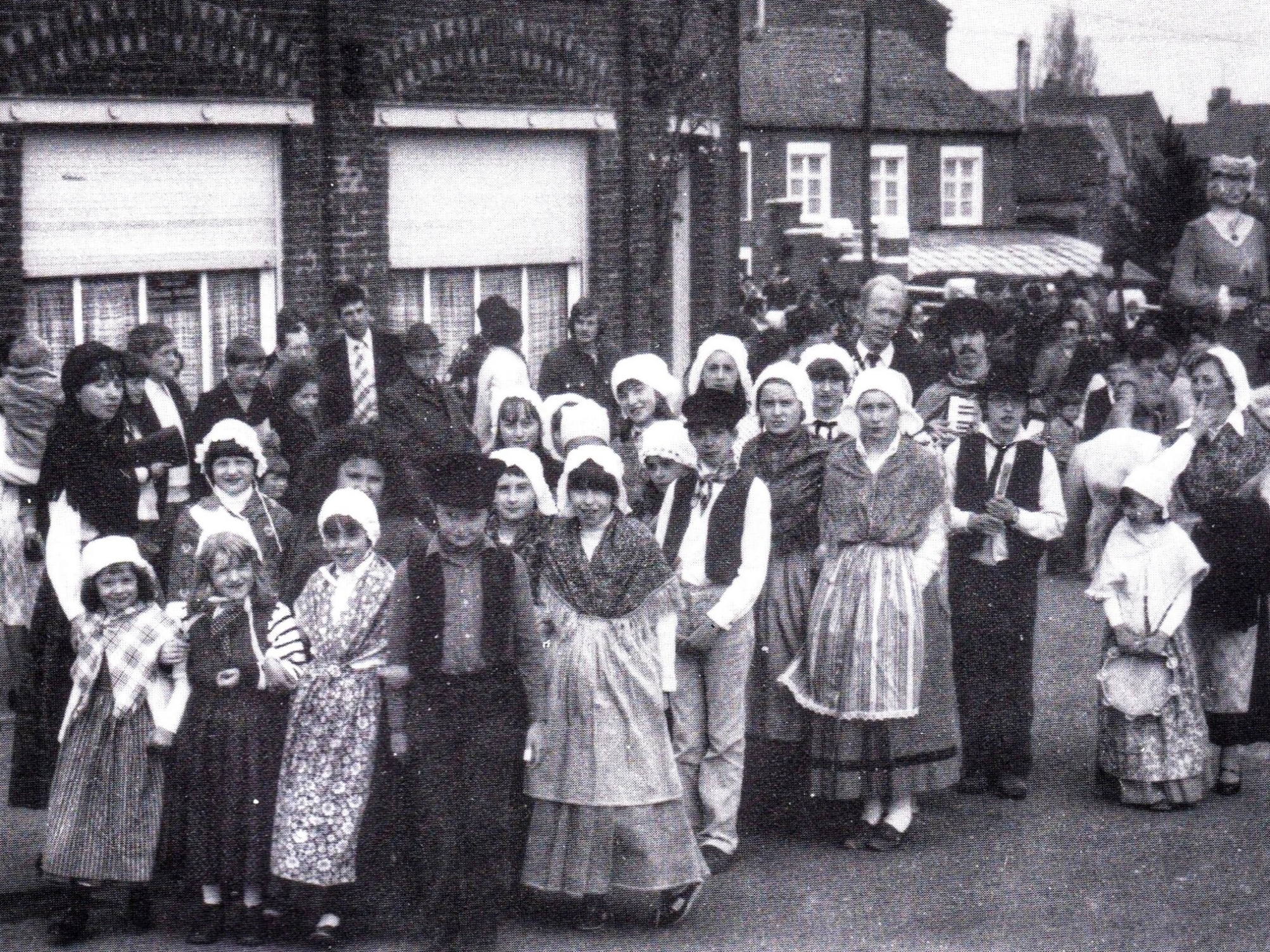
Flemish band, the Sprinkhaanders Steenvoorde - 1979
As for the majorettes from Blankenberghe, "they" danced their hearts out, just like their compatriots, the Gilles from Warneton.
An excellent procession all in all, applauded by a large and happy crowd, who gave a special standing ovation to the Queen of Flowers and her Bridesmaids, who were seated in two tastefully decorated carriages."
At 1979 the Friends of Fromulus invited Europe's largest Giant, Jean Turpin de Nieuwpoort, to take part in the Grand Cortège for the 65th anniversary of Jean le Bûcheron.
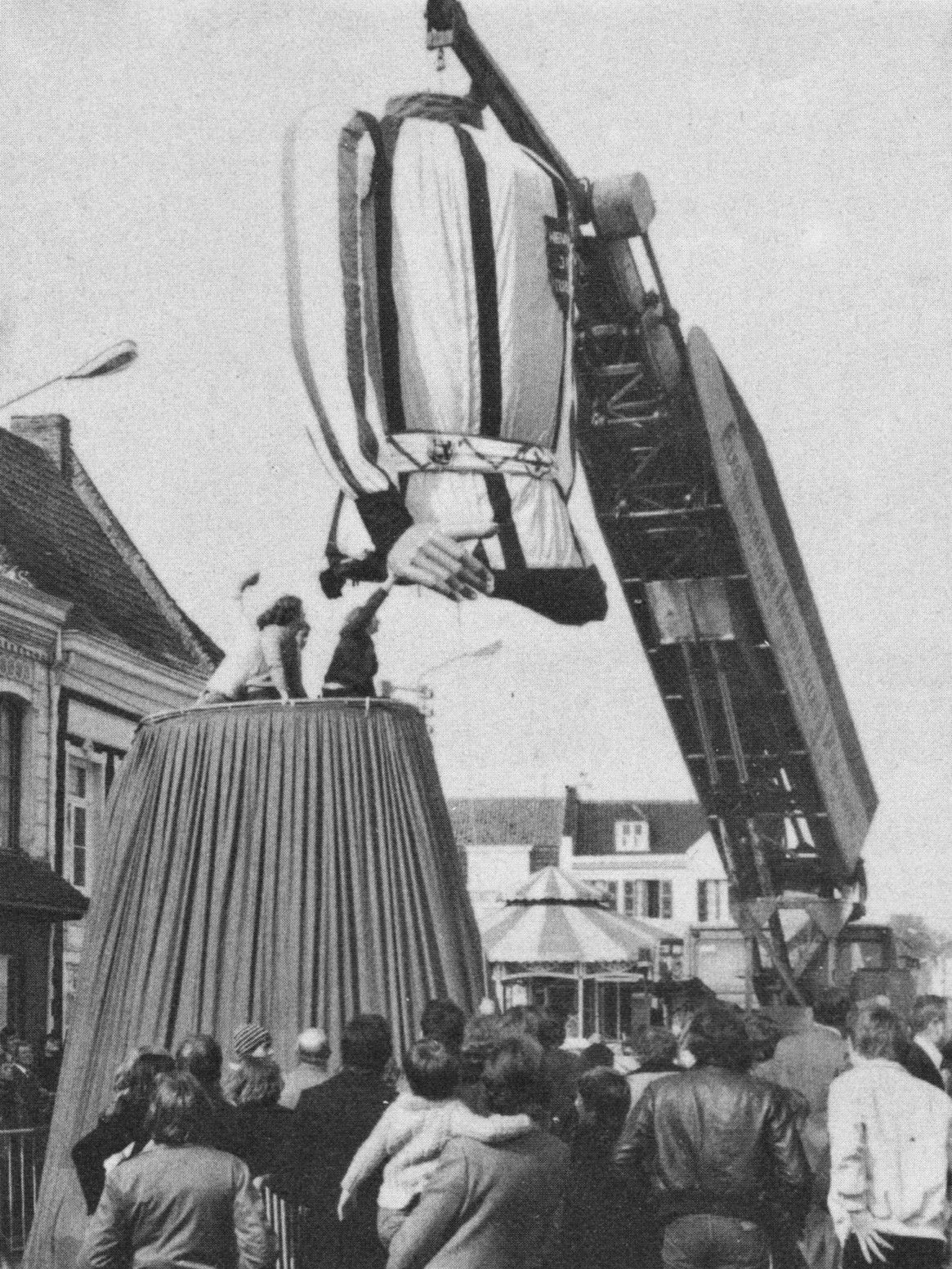
1979 - Montage de Géant Jean Turpin
In 1989, the 1st Ronde Européenne de Géants portés was organized by the association to celebrate the 75th anniversary of their Giant, and exceptionally replaced the Summer Carnival.
At 1995 the name was changed to "Carnaval d'Eté International".
At the International Summer Carnival 1996 the procession was made up of 20 groups: 7 from Steenvoorde, 2 from Renescure, from Godewaersvelde, 5 from Belgium, 3 from the Netherlands, Denmark and Peru.
In 2013 the Steenvoorde Carnival and its Giants were included in France's inventory of intangible cultural heritage.
Hymn of the Giant John the Woodcutter
"Grand Constant"
In Steenvoorde the Philharmonic Society an institution more than two hundred years old, accompanies all large gatherings of Géants portés.
It gets the giants dancing to the final rigodon on Grand Constant, the Giant's Hymn.
Audio recording 1977
